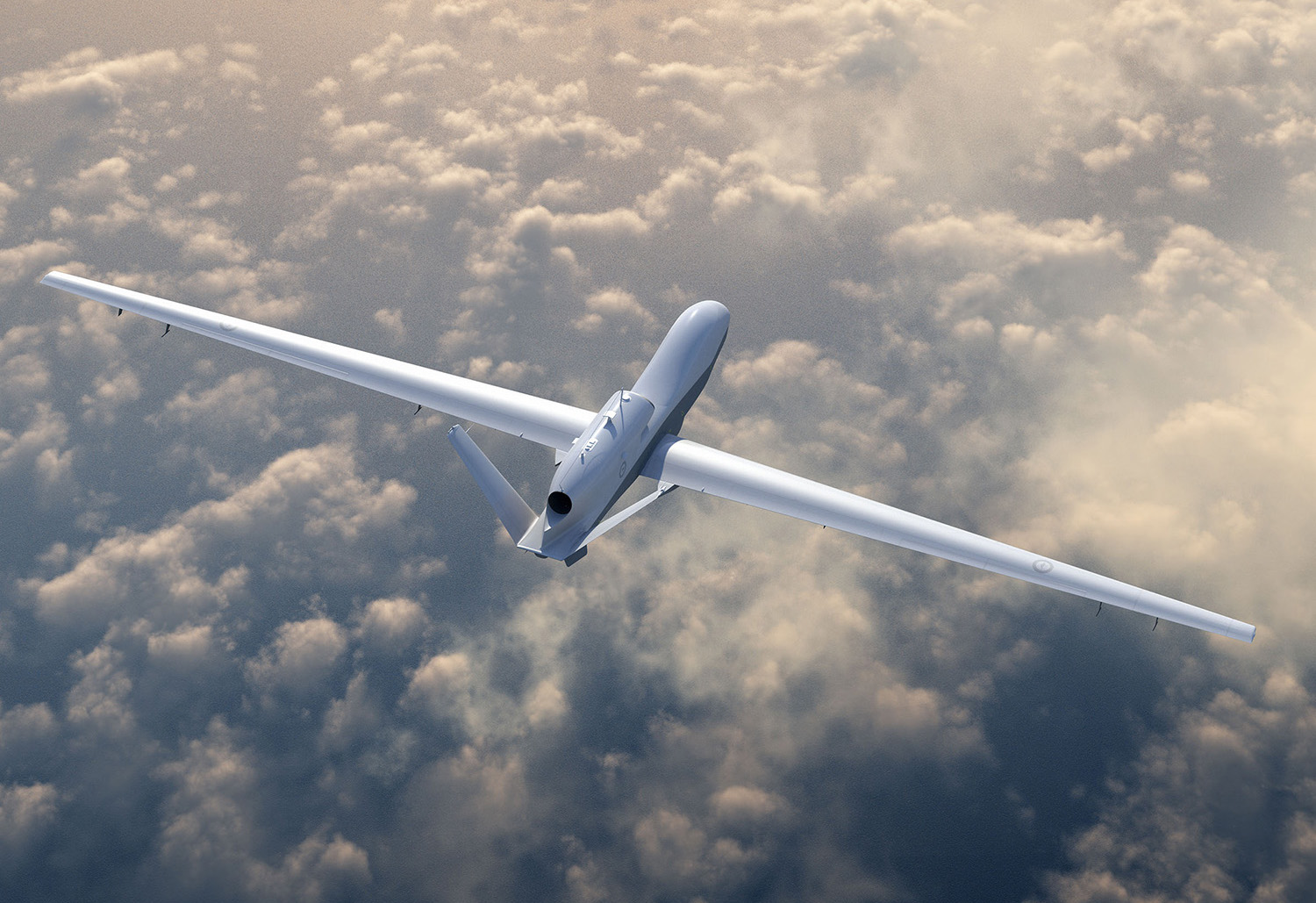Promoted by Northrop Grumman
Australia’s recent decision to fund an additional MQ-4C Triton unmanned aircraft shows the federal government is determined to address a critical gap in the country’s comprehensive security needs – persistent, wide-area intelligence, surveillance and reconnaissance (ISR) of the continent’s vast maritime environment.
Australia’s interest in unmanned, wide-area ISR stretches back to 2001, when the US Air Force (USAF) sent an RQ-4 Global Hawk from Edwards Air Force Base in California to Royal Australian Air Force (RAAF) Base Edinburgh in South Australia. Not only was it the first time an unmanned aircraft had crossed the Pacific Ocean, it was also the longest flight of an unmanned aircraft, at just under 13,220 kilometres.
The record-breaking demonstration of Global Hawk as an advanced concept technology was a joint effort between the RAAF, USAF, Defence Science and Technology Group, the US Defense Advanced Research Projects Agency (DARPA) and Northrop Grumman. Global Hawk had proven itself.
Fast forward to March 2014 when then Prime Minister Tony Abbott announced Australia’s intent to purchase the high-altitude, long-endurance maritime variant of Global Hawk, the MQ-4C Triton. The 2016 Defence White Paper reiterated plans for manned-unmanned teaming to “increase the capacity of the [Australian Defence Force] to monitor the approaches to Australia with the P-8A Poseidon maritime surveillance and response aircraft and the high-altitude MQ-4C Triton unmanned aircraft.”
If the need for persistent, wide-area ISR existed in 2014, it is absolutely imperative in 2020 as strategic competition grows in an increasingly unstable region. As Defence Connect’s Stephen Kuper noted late last year, “Indo-Pacific Asia’s evolving power paradigm is changing the way Australia views itself and its position in this changing world. The need for both continental and forward defence highlights the necessity for the nation to balance the strengths and weaknesses of Australia’s historic doctrines to form the basis of a reinvigorated Australian presence in the Indo-Pacific.”
And that was before coronavirus turned the world upside down.
The pandemic has only accelerated strategic competition in the Indo-Pacific and reinforced the vulnerabilities of forward basing arrangements, the use of heavily manned capabilities such as carrier battlegroups, and the requirement for Australia to act independently on a more regular basis. States have also sought to take advantage of the uncertainty through a range of hybrid warfare tactics to further their interests. This is changing the fundamental nature of warfare in our region and the capabilities needed to deter, detect and manage threats.
With Defence set to announce the outcomes of its force structure planning review, it is critical to look to systems that maximise efficiencies and the utility of our defence capabilities. To use an analogy, we have built the foundations, we need to finish constructing the rooms that will complete the structure.
Consider the MQ-4C Triton’s standard operating crew of five – an air vehicle operator, a tactical coordinator, two mission payload operators and a signals intelligence coordinator. Assuming a crew operates the system for eight hours, Triton requires 15 personnel to conduct a 24-hour mission. It is also important to note that Triton’s endurance is all on a single tank of fuel.
Now compare the RAAF’s P-8A Poseidon, which requires a crew of nine and would need to conduct crew rotation and multiple in-flight refuels to execute a 24-hour mission. The KC-30A Multi-Role Tanker Transport requires a minimum crew of four for a refuelling mission. Not only will running a 24-hour surveillance mission require fewer personnel, Triton is significantly less costly than operating two manned platforms to achieve the same purpose. Then there is the opportunity cost of using a P-8A for ISR work, rather than its intended, higher-end operational roles.
While the P-8A is designed to conduct anti-submarine warfare, it has been used as an ISR platform as militaries around the world begin retiring their ageing P-3 Orion aircraft. However, Triton’s persistence frees up the P-8A to conduct its doctrinal mission of hunting submarines. It is also designed to complement the P-8A and will enable operational efficiency through what is termed manned-unmanned teaming (MUM-T).
This brings us back to the discussion of efficient employment, with Triton utilising fewer crew, freeing up P-8As and enhancing their capabilities. Triton’s unblinking eye from 50,000+ feet is able to observe more than 2.5 million square kilometres in a single 24-hour mission, keeping a persistent watch over Australia’s vast maritime environment and regional flashpoints, while the P-8A conducts high-end anti-submarine warfare missions.
Because Triton relays near-real-time data to the distributed ground station – Australia (DGS-AUS), commanders are able to make critical decisions to conduct specific missions against identified targets of interest, such as task a P-8A to search a specific area where Triton has detected an anomaly. This near-real-time transmission of data buys time like no other aircraft in military history. Triton’s range allows it to fly out of RAAF Tindal on a surveillance mission over Australia’s northwest approach, reaching one of the world’s busiest shipping lanes in the Indian Ocean approaching the Malacca Strait.
Its ability to detect suspicious activity that far in advance gives commanders time to conduct a thorough situational analysis and determine the most appropriate course of action to meet a potential threat. It also provides a critical sovereign capability for the Australian government in supporting its Pacific step-up and humanitarian and disaster relief (HADR) activities with our Pacific island partners.
The 2016 Defence White Paper highlighted Australia’s intent to purchase seven Tritons, which would give the RAAF two simultaneous, persistent orbits. With one aircraft observing, one being prepared, one in post-mission turnaround, and one in reserve, Defence could keep a watchful eye over Australia’s exclusive economic zone, while also observing military activities in the South China Sea or supporting our Pacific island neighbours with maritime security or HADR requirements. It is a capability Australia has never had.
For Australia, Triton is critical today and indispensable tomorrow.
 Login
Login






